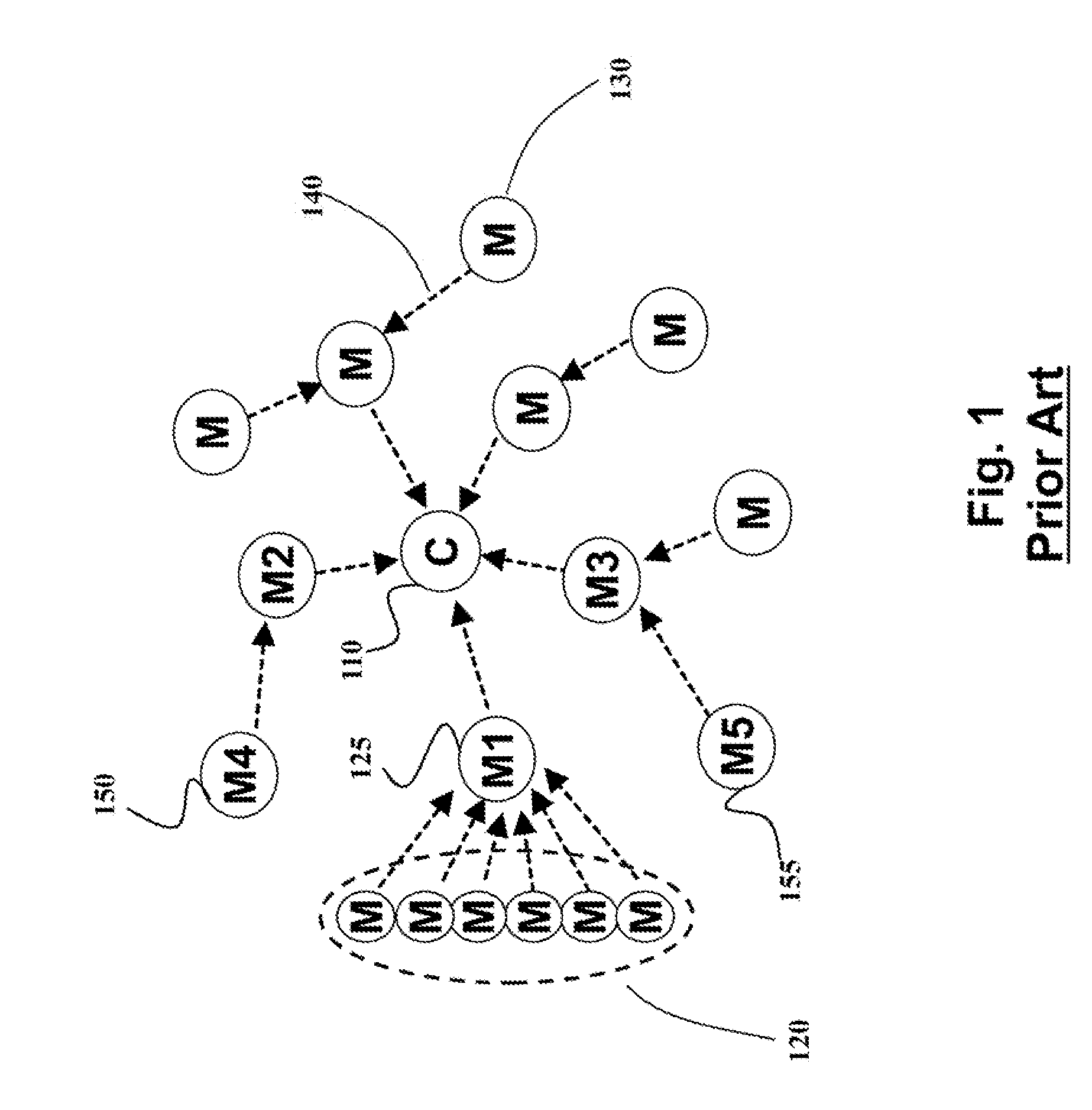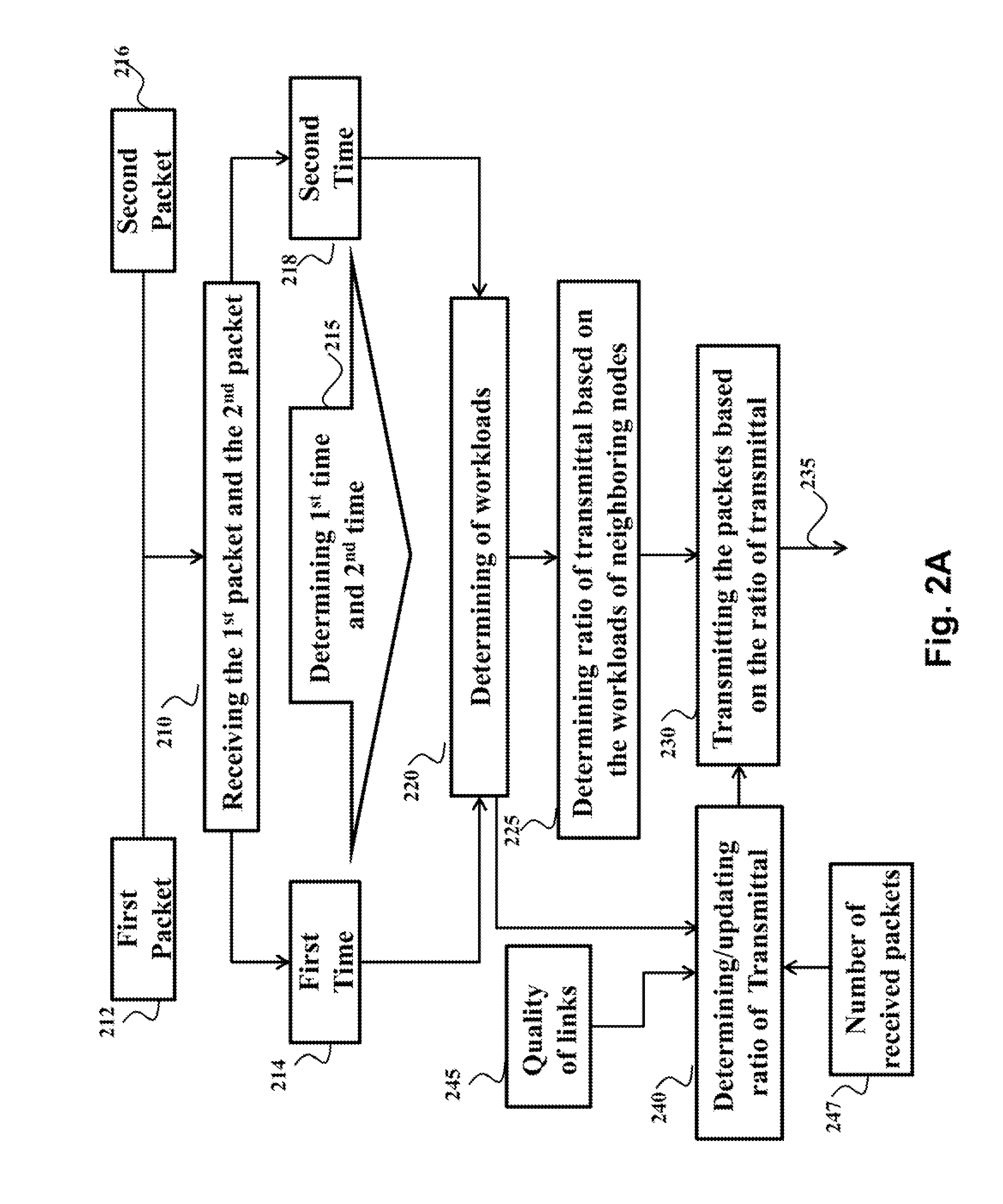Load Balanced Routing for Low Power and Lossy Networks
- Summary
- Abstract
- Description
- Claims
- Application Information
AI Technical Summary
Benefits of technology
Problems solved by technology
Method used
Image
Examples
Embodiment Construction
[0037]FIG. 2A shows a block diagram of a method for routing packets by a node 200 in a low-power and lossy network (LLN). FIG. 2B shows schematically a structure of the node 200. In various embodiments, the load balancing is achieved by transmitting the packets to the multiple nodes neighboring the node 200, e.g., at a rate proportional to the workloads of those neighboring nodes. Such transmittal allows balancing the load over multiple neighboring nodes, instead of transmitting all packets to a single parent node in an unbalanced manner. Moreover, the allocation of the packets transmitted to the neighboring nodes is based on current workloads of those nodes to balance the overall workload of the neighboring nodes. In various embodiments, the comparison of the workloads is performed without increasing communication overhead of the LLN.
[0038]For example, a first packet 212 is received 210 by the node 200 from a first node at a first time 214, and a second packet 216 is received 210 b...
PUM
 Login to View More
Login to View More Abstract
Description
Claims
Application Information
 Login to View More
Login to View More - R&D
- Intellectual Property
- Life Sciences
- Materials
- Tech Scout
- Unparalleled Data Quality
- Higher Quality Content
- 60% Fewer Hallucinations
Browse by: Latest US Patents, China's latest patents, Technical Efficacy Thesaurus, Application Domain, Technology Topic, Popular Technical Reports.
© 2025 PatSnap. All rights reserved.Legal|Privacy policy|Modern Slavery Act Transparency Statement|Sitemap|About US| Contact US: help@patsnap.com



